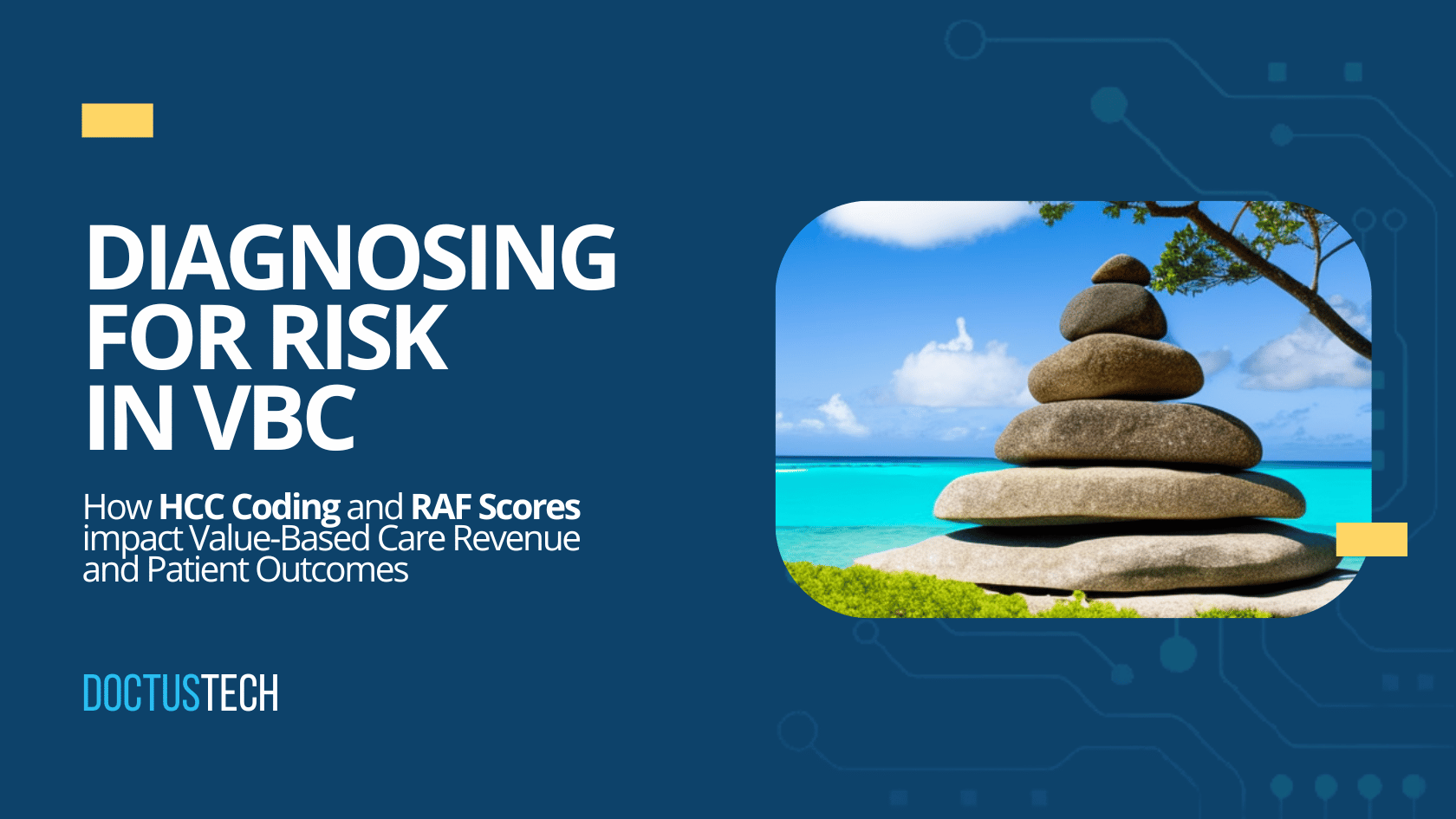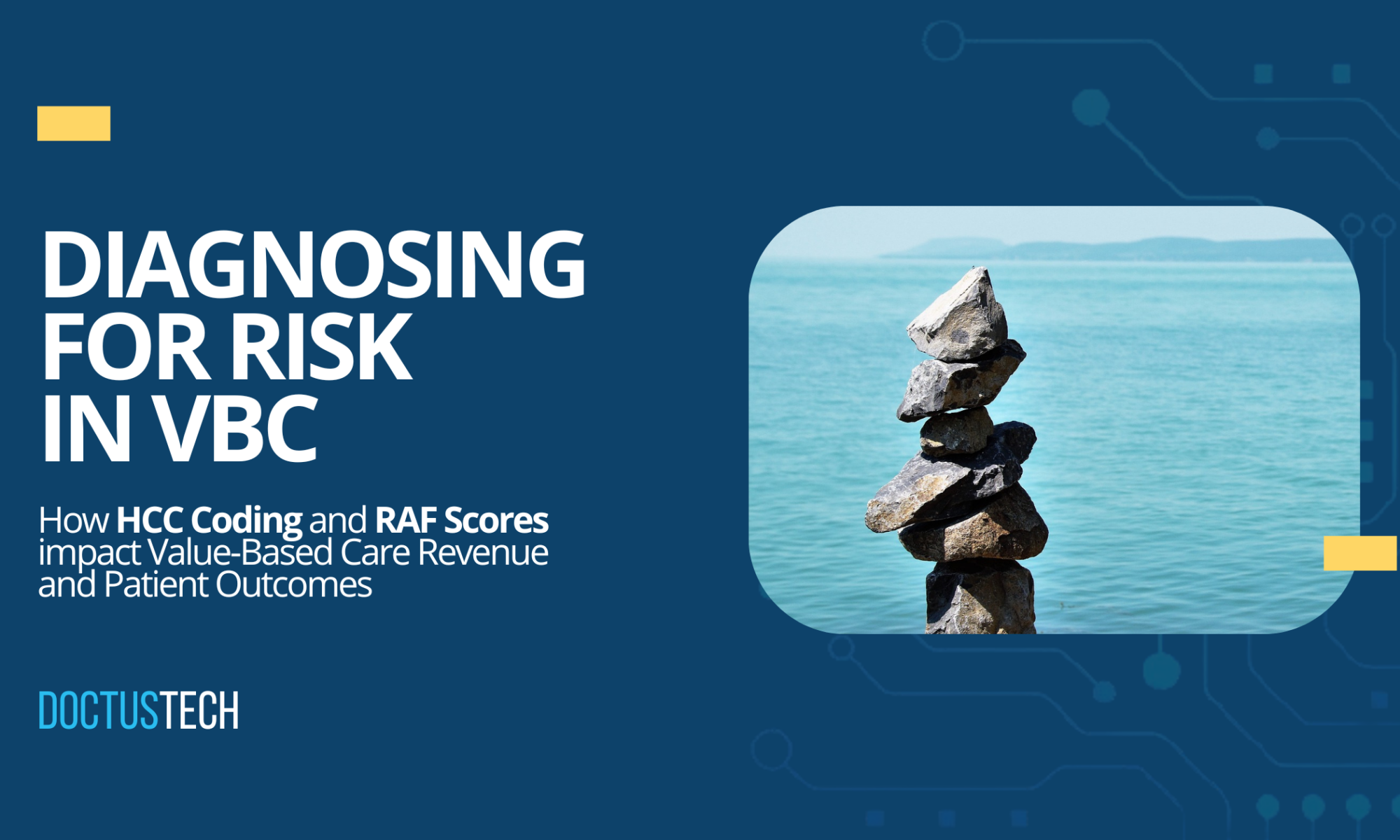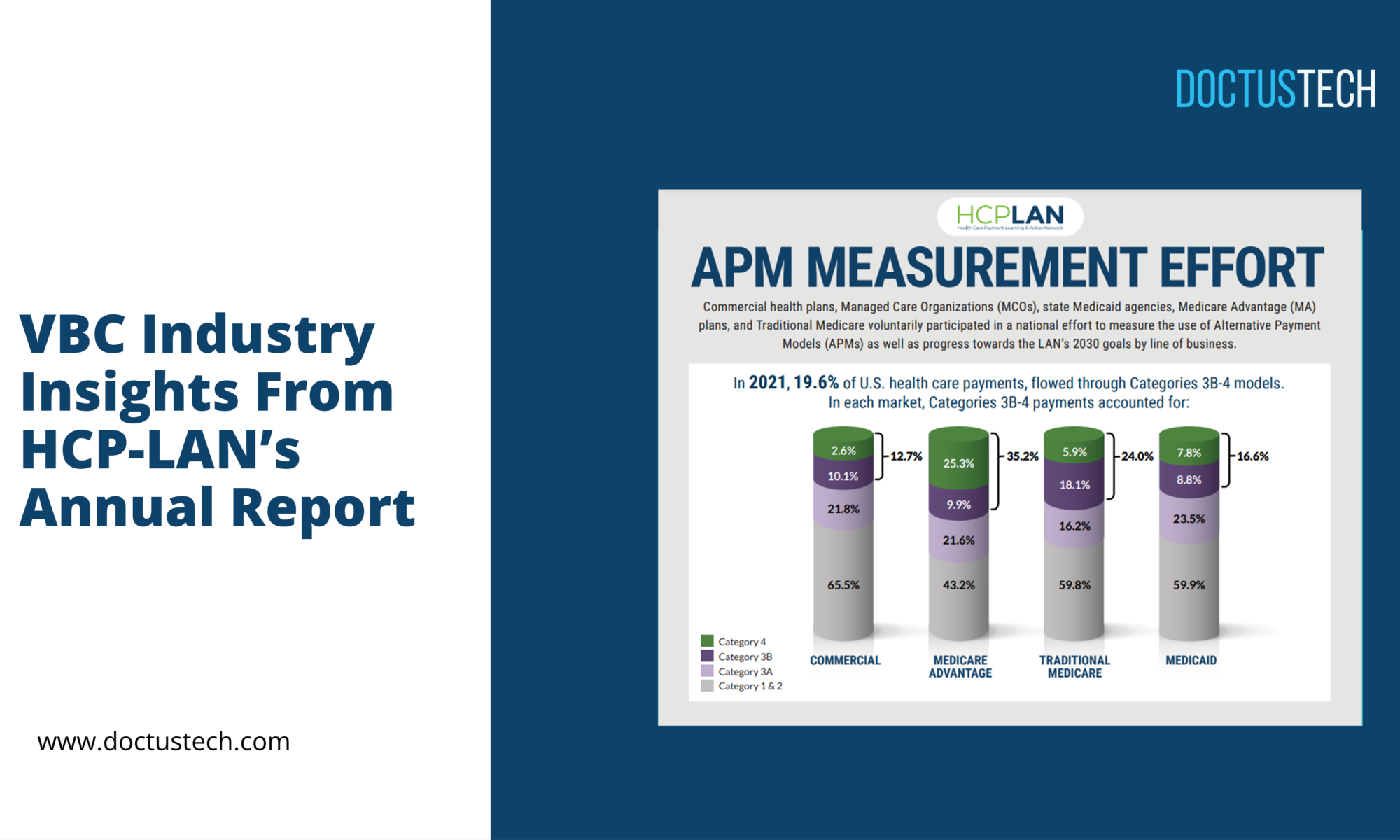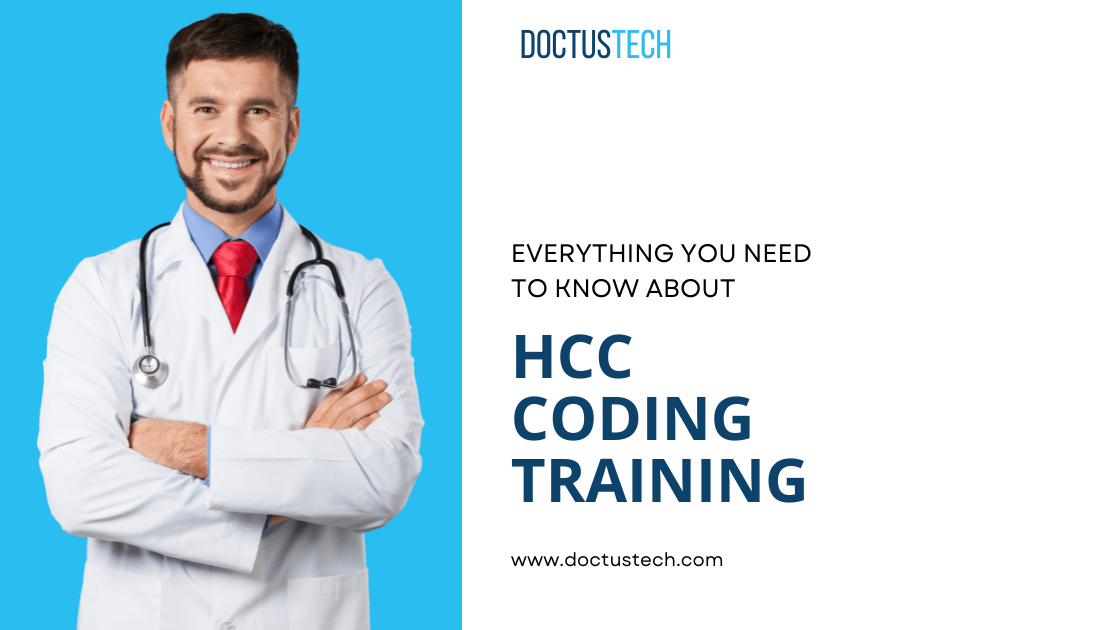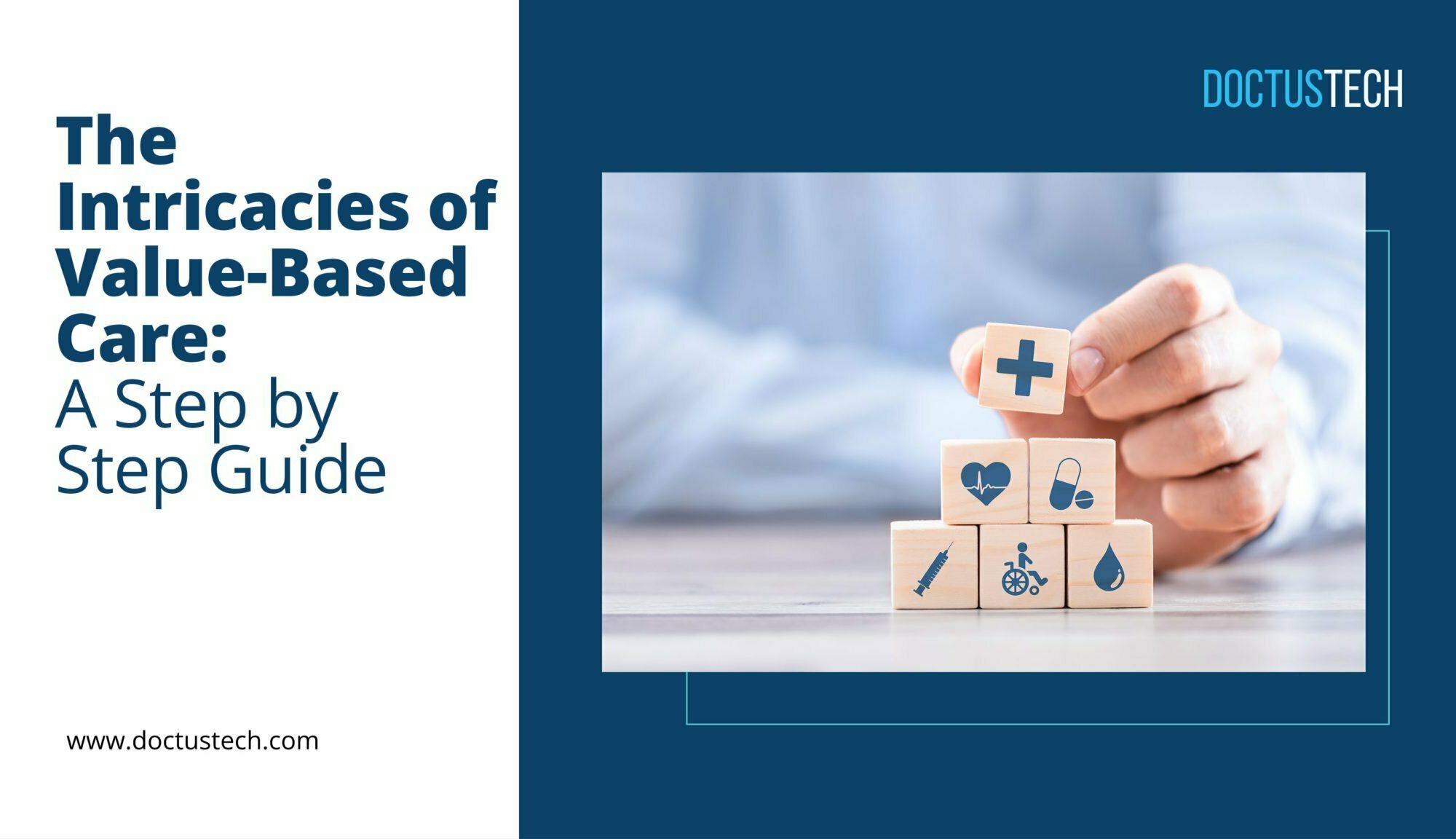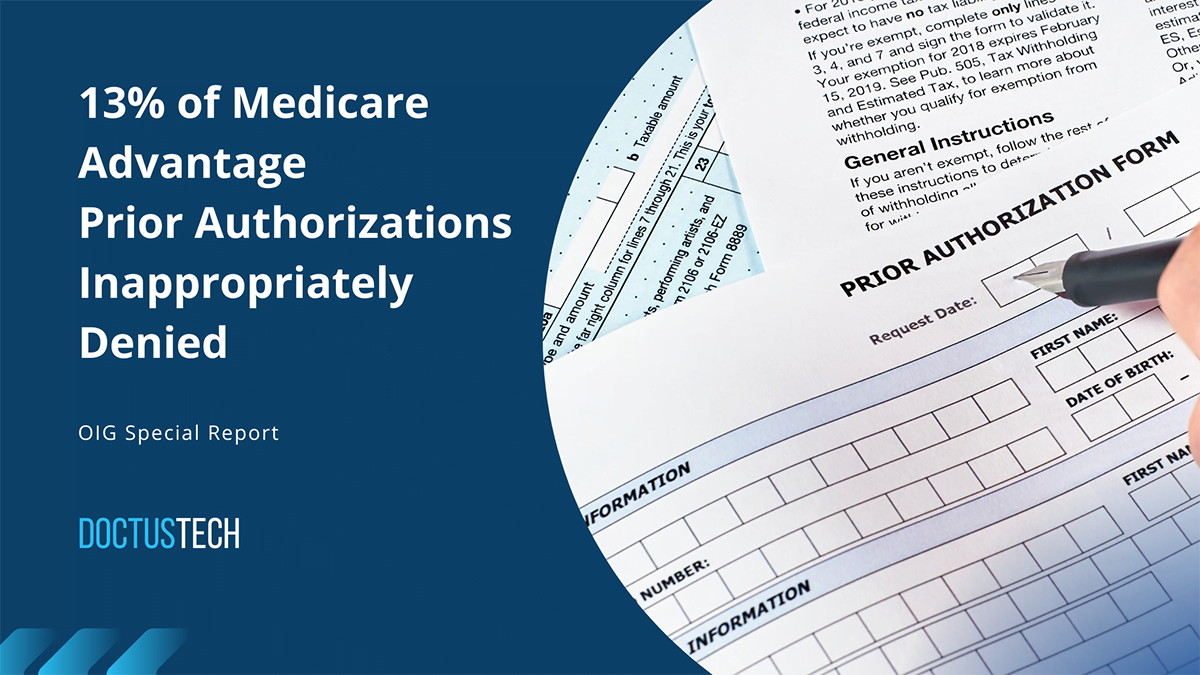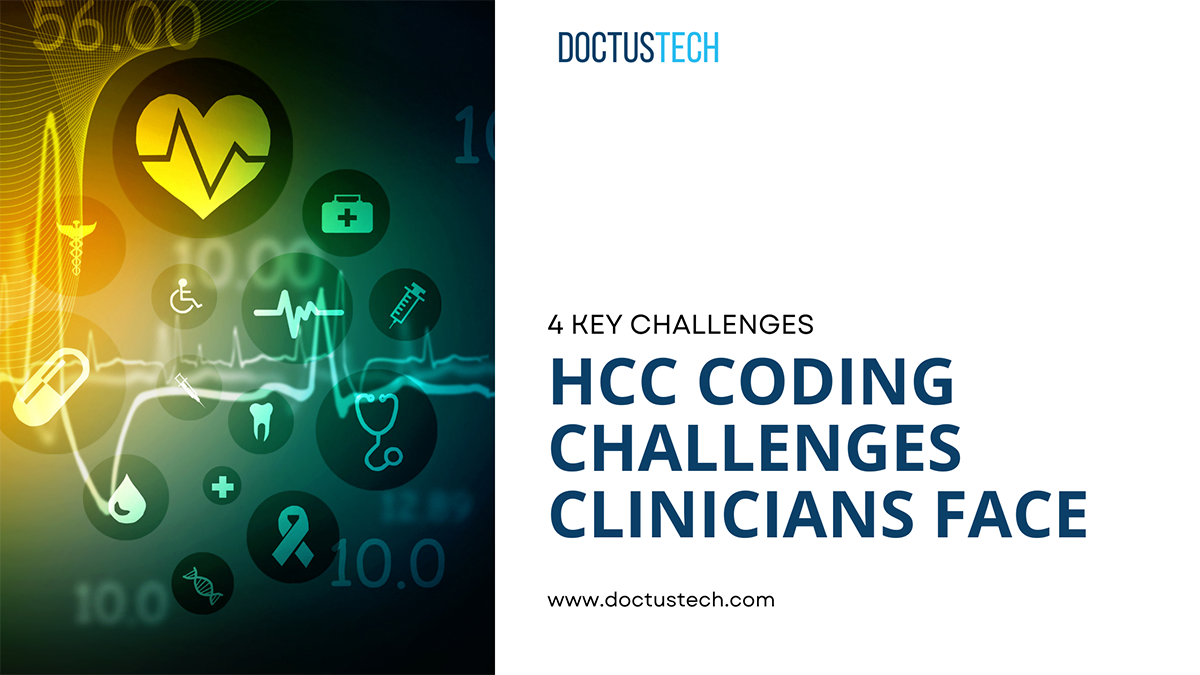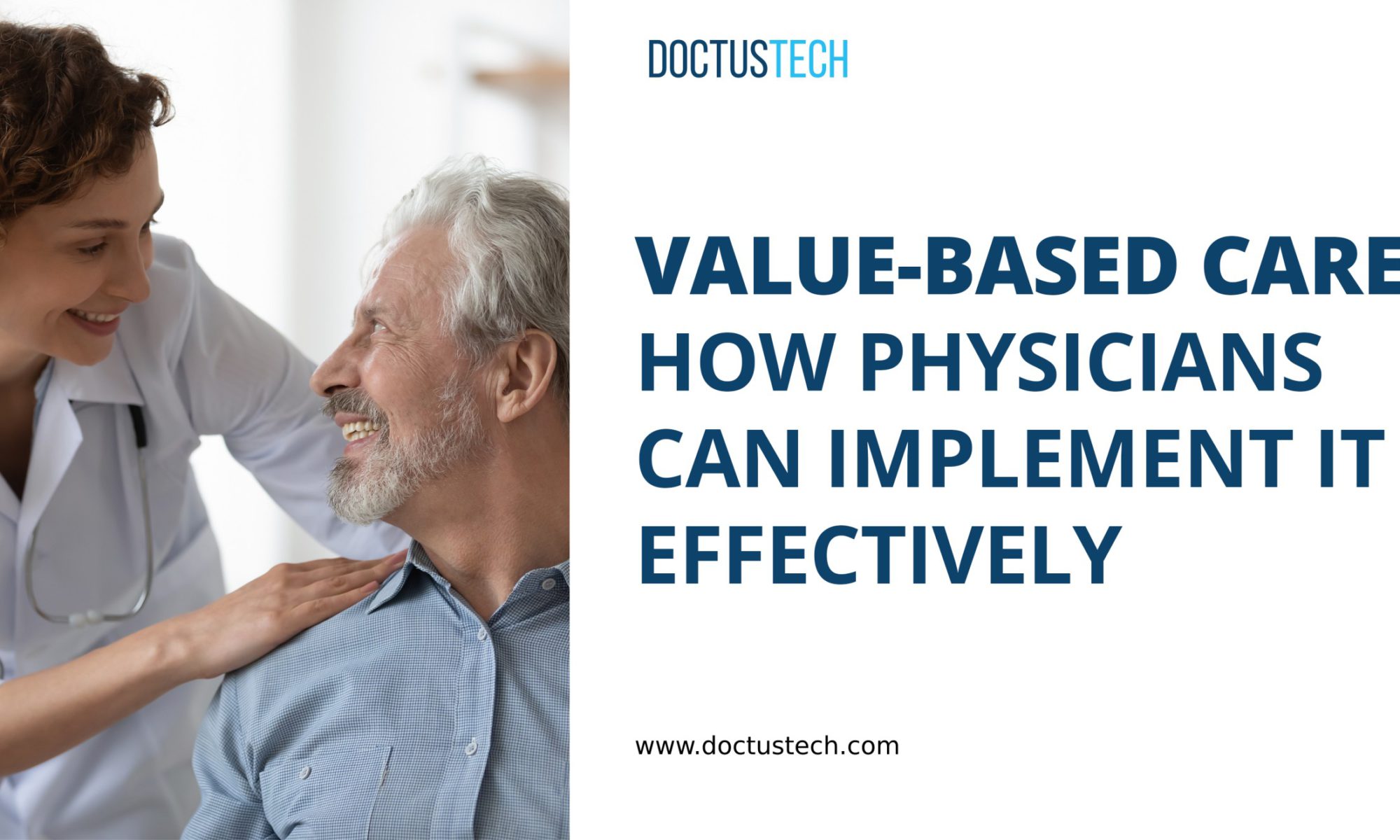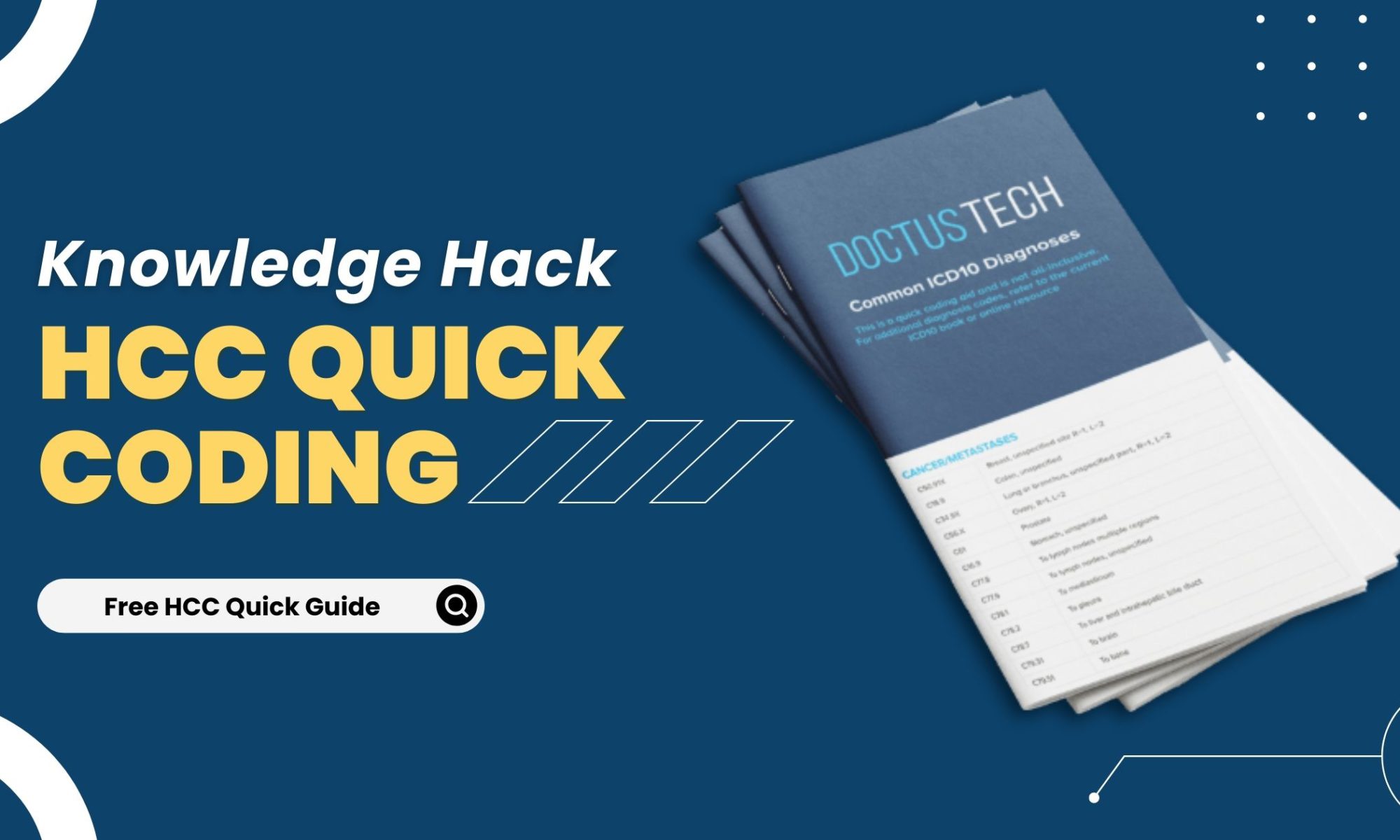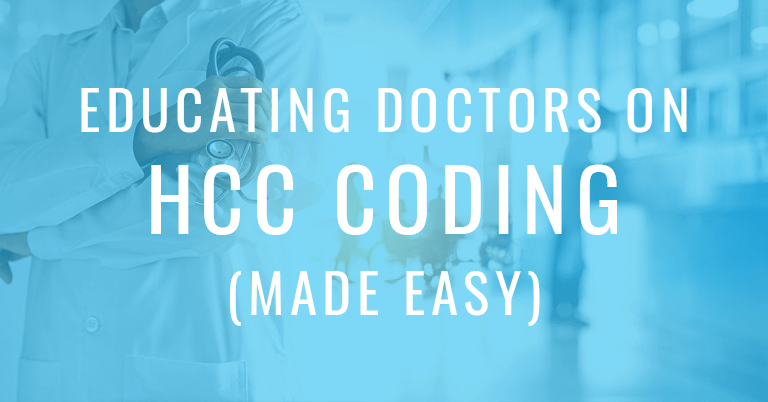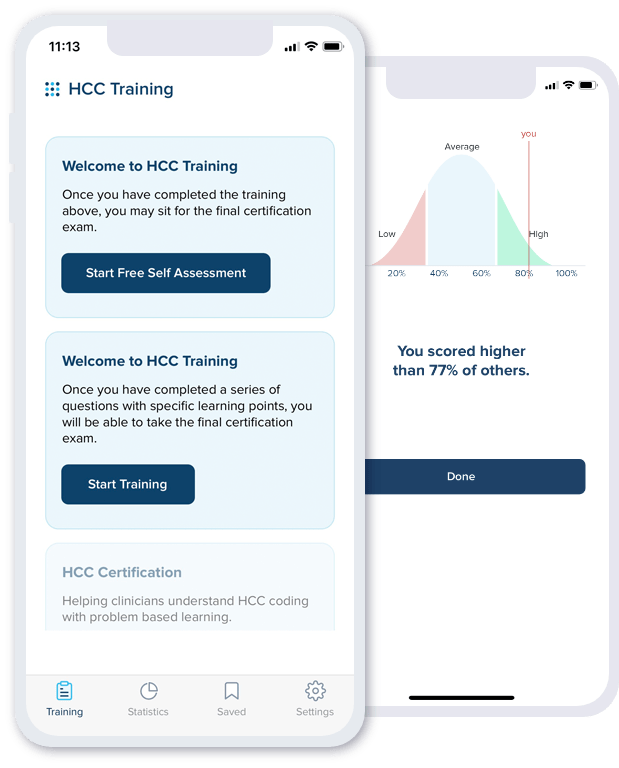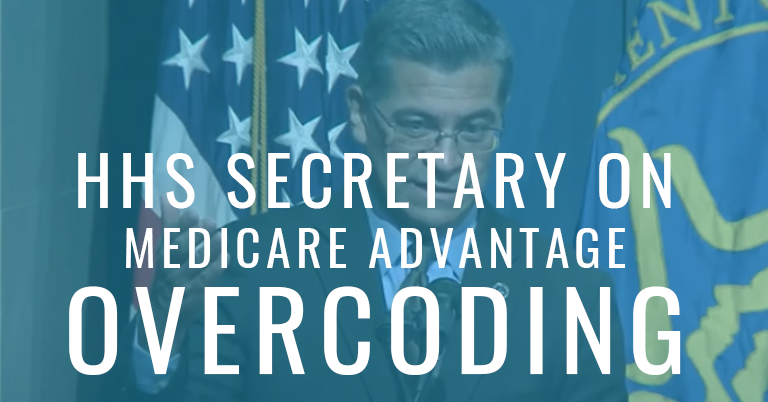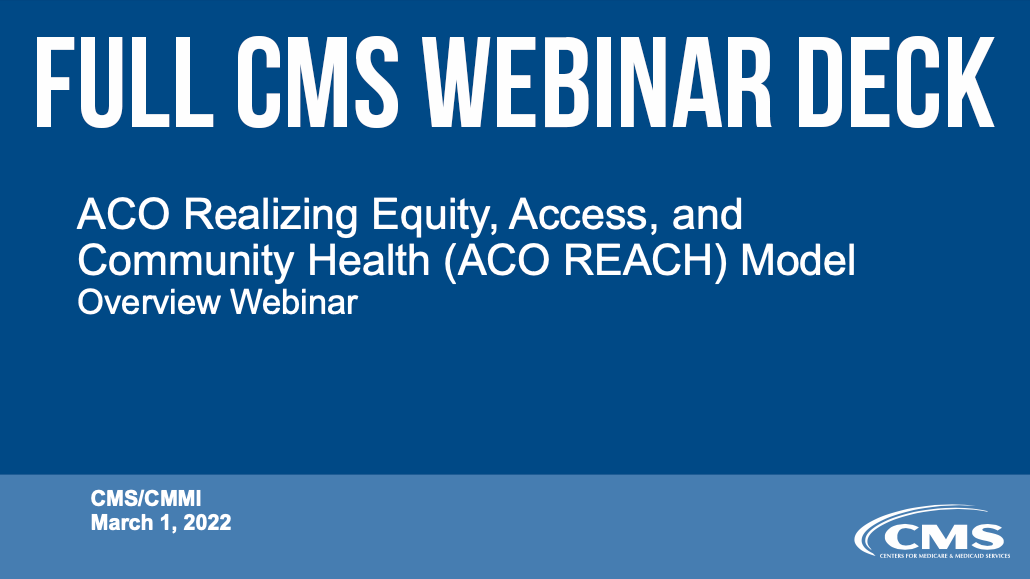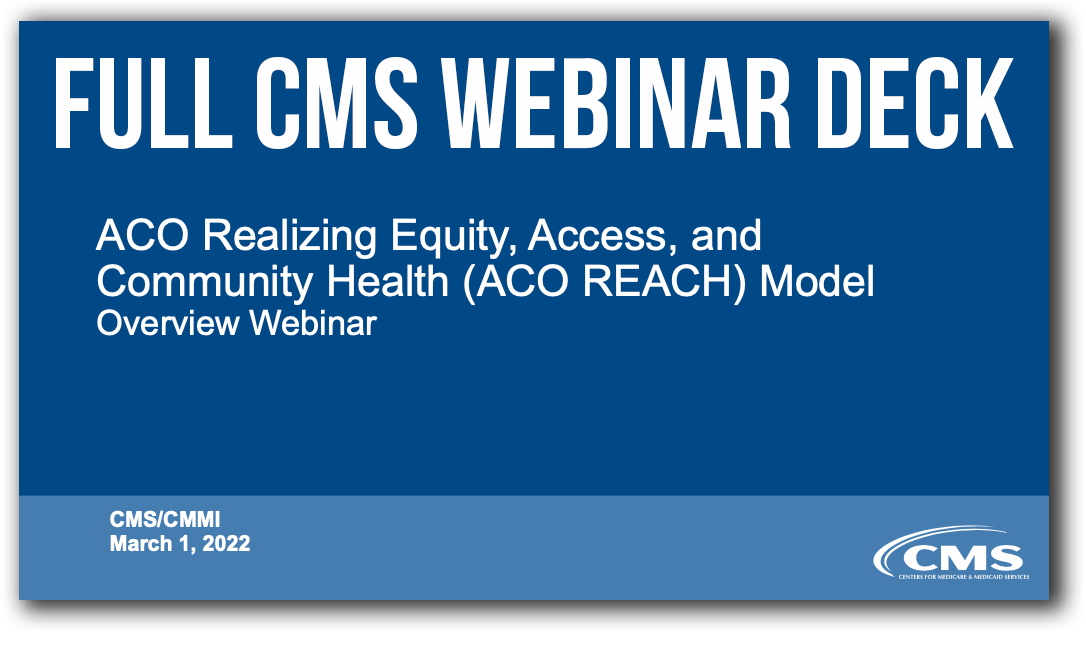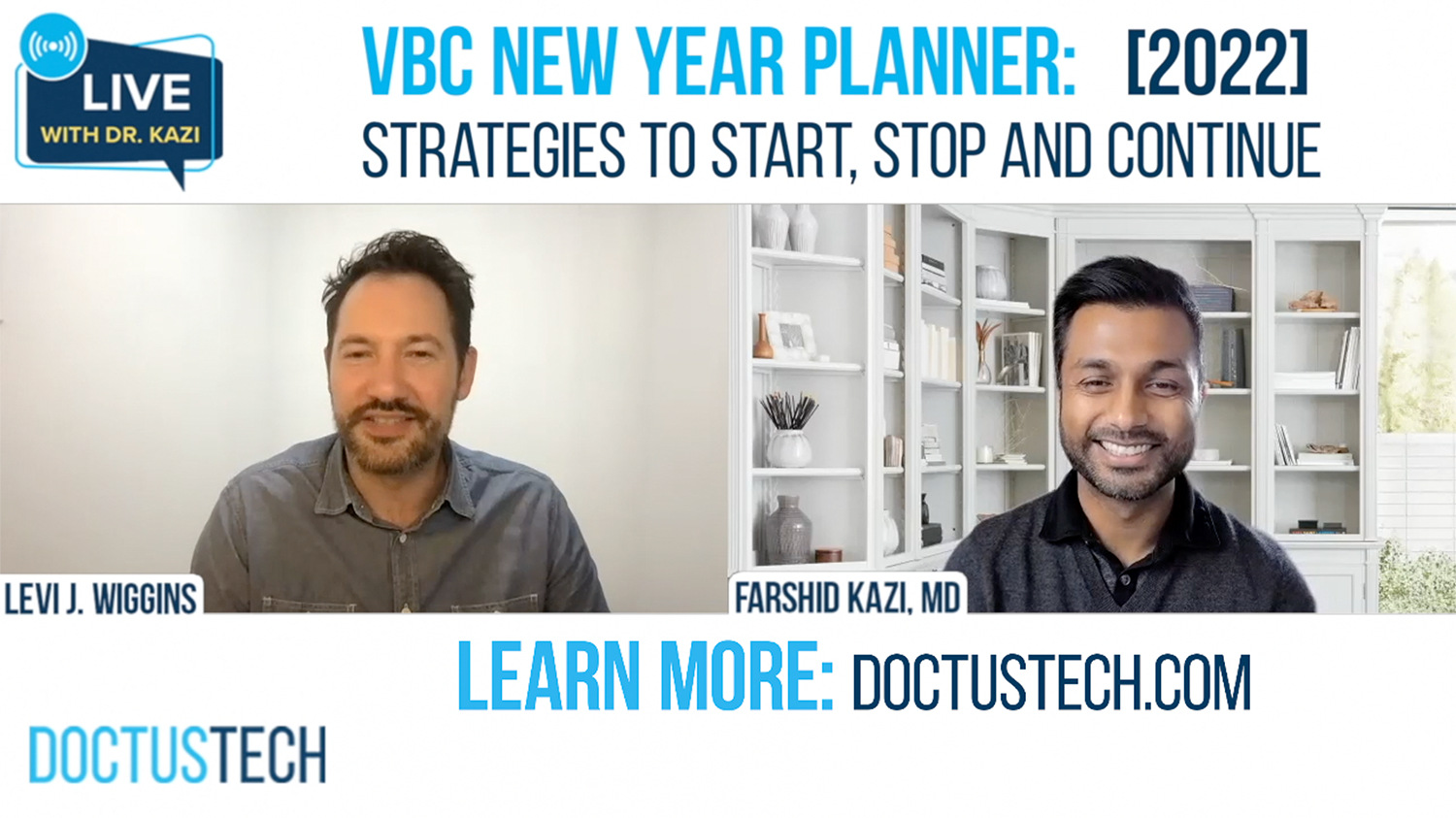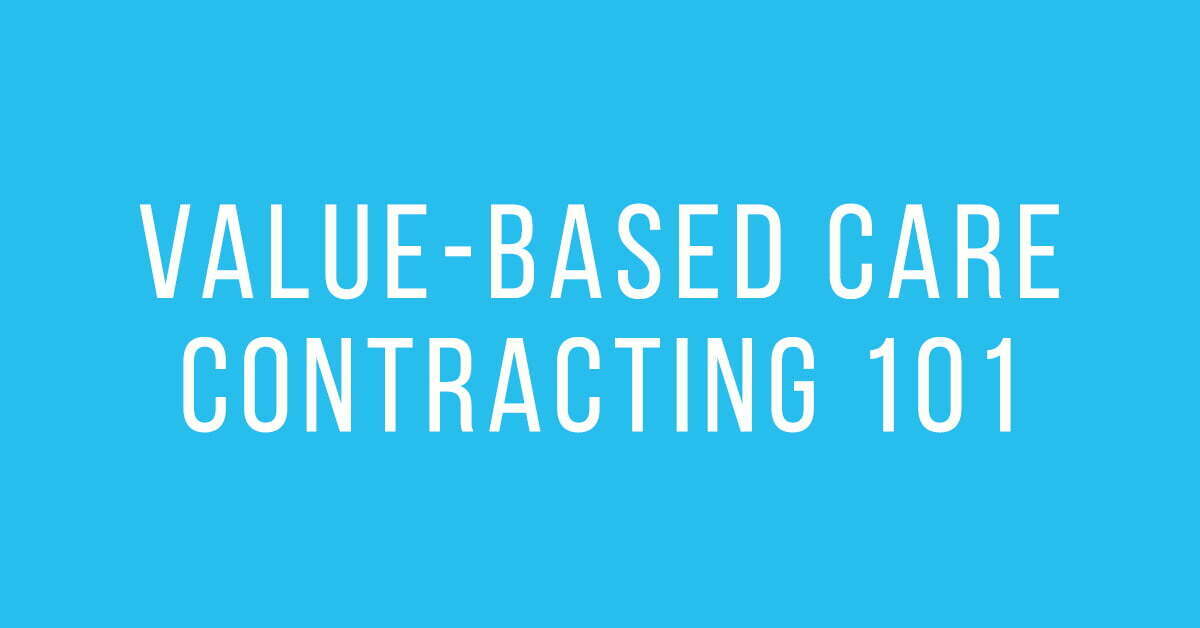Levi Wiggins: Alright. Here we are. Live with Dr. Kazi for Year End Preparation for 2022: things to stop doing, things to start doing and things to keep doing. Our host, as always, is Dr. Kazi. Give us a brief introduction!
Farshid Kazi, MD: Thank you everybody. Farshid Kazi, internist by training, with a palliative care focus, then hospitalist, outpatient doctor, and kind of grew up in the value-based care system. And now I’m here with DoctusTech.
Levi Wiggins: All right now, I want to jump right in. So we’re going to start with things to stop, what to start its place. And when we get to the end, we’re going to talk about some things to continue.

So the first bad habit of VBC and HCC documentation to break in 2022 is the 60 minute lectures once or twice a year – stop doing that. But why Dr. Kazi?
Farshid Kazi, MD: Uh, other than the fact that they’re mind-numbingly boring, and as we all know, we don’t actually retain the information. The data is very clear that doctors don’t have sustained behavior change from it. So if you think about your attention span, post-college, I’m assuming most of you can’t sit and listen to a lecture for 60 minutes anymore.
Nobody can, so why do we keep doing it? Because it makes us feel good. We should stop doing it, call it for what it is. Let’s find a better way to meaningfully engage doctors, teach them about this information, and then hold them accountable. And what that means can vary by organization. It can mean that you’re running some type of test to make sure knowledge retention is happening.

You can do one-to-one coaching, which is still a very meaningful way to give feedback to your docs. But please, please stop doing the one hour lectures—for the sake of your doctors—and start holding them accountable for real knowledge retention through one of many ways. And DoctusTech is one of those as well.
Levi Wiggins: Wait, so you’re saying the 60 minute lectures, just like they do in medical school (sarcasm)! Right? That’s how doctors like to learn, right?
Farshid Kazi, MD: Yeah. I mean, Levi, there’s no magic there, right? So you can teach doctors multiple different ways. Teach them with clinical vignettes. You can teach them with one-to-one feedback. You can even teach them by doing charts and dissections, but what you should not do is put them in a classroom setting for an hour and teach them about ICD 10.

Levi Wiggins: That sounds so boring. Alright. The next bad habit to stop as we roll into the next year: pre-templating notes for doctors with new diagnoses. “Here doc, I think you missed one!”
Farshid Kazi, MD: Yeah, we all do it. Any organization has a lot of different strategies on making it easier for doctors. We get it. Doctors are really busy. There’s a lot to do. But pre-templating notes, giving them the diagnosis, is really frowned upon by CMS and DOJ. And if you haven’t seen our white paper around RADV audits, you should take a look at it, because there really have been some slaps on the wrist saying, look, let the doctors do what they’ve been trained to do, make clinical decisions.
And that should not be by prompting from non-clinicians around new diagnoses.

Levi Wiggins: So the thing to start in place there, uh, improving physician workflows inside the EMR. Tell me more about that without a doctor’s tech infomercial. I’m warning you!
Farshid Kazi, MD: So when we think about how we make that easier for doctors, oftentimes we’re trying to do the work for doctors, but really that’s a heavy lift and the hardest solution. Fix the problem inside the EMR. Find a way to get the data that you have outside of your EMR, into the EMR, and solve for the issue, so that doctors can make clinical decisions while they’re with their patients at the point of care.
Levi Wiggins: Okay. And I’ll go ahead and make the infomercial being the marketing. We have a way to do that. So if you’re trying to break that bad habit, hit me up on LinkedIn.

The next thing is stop the checklists of claims-driven diagnoses without supporting evidence – or start getting in big trouble.
Farshid Kazi, MD: Again, the same slap on the hand that happens from pre-templating notes with diagnosis for doctors can happen when you start putting bad data in front of them. We all know claims data is notoriously noisy and inadvertently inaccurate. And so if you start to put inaccurate data in front of your doctors, hoping that they’re going to be a hundred percent accurate, you’re going to find yourself in a bad spot.
So really, starting to think of, “how do I get the right data in front of the doctors at the right time with meaningful support so they can make a true informed decision” is critical here as far to part of your accurate risk adjustment documentation.
Levi Wiggins: We do talk a lot about that checkbox culture, and that’s not why you help patients. You don’t want to check boxes. You want to help them.
Farshid Kazi, MD: You give the doctors a list of check boxes to go through. Their only mission is to get through that. It’s not to make sure it’s accurate. It becomes really a difficult task for them to do. But if you’re giving them insights, giving them clinical guidelines, and letting them do what they do best—which is make medical diagnoses and treat patients—they will optimize their documentation and it will optimize your risk adjustment score accuracy.

Levi Wiggins: So the start on that is to make more of an effort to get supporting documentation and then provide it to your doctors with any claims data. Does that sound about right?
Farshid Kazi, MD: That’s absolutely right.
Levi Wiggins: So when we look at these organizations that are really forward-thinking, they’re kind of where everybody wants to be. There are a few things we see that they’re doing. And if your organization is doing this, first off, I want to commend you – because you guys are doing the hard work of making this easier for the doctors. Thank you. You guys are heroes.

Ok, of the things to continue in 2022 internal audits. I know you hate it, but there’s so much better than an external audit.
Farshid Kazi, MD: Tell me about it. Yeah, gone are the days of just trying to increase your RAF. That should never be part of the nomenclature. It should not be the talk talk-track for any of your teammates. Really, you need to be thinking about how to make your documentation accurate.
Not only for increasing the proper diagnoses, but looking for inaccurate over-documentation. It happens inadvertently. It happens in every organization and, some of the data is showing somewhere between 5% and 15% of data submitted is inaccurate. So starting to look both ways and telling Medicare, CMS, DOJ: we are doing our best to make sure we’re documenting accurately.
And that’s because we are internally auditing for anything that is over-coding. Give the money back before you ever receive it. So you don’t get into trouble.
Levi Wiggins: That’s absolutely right. And, and it’s partly just an ethical thing. Partly it’s an administrative thing, but for those of you who are doing those internal audits, you guys are true heroes.

Levi Wiggins: OK, the next thing to continue for 2022 is accountability for your doctors!
Farshid Kazi, MD: Yeah, too often, we start to, to spread ourselves thin. Everyone’s doing everything. It’s a team approach, but really, who’s going to be held accountable for the knowledge game? How do we make sure the doctors have retained information to be accurate and compliant with their documentation?
We need to show some type of effort and accountability. And again, thinking through this is not easy to do, transitioning from a fee for service model to value-based care requires a massive change – and dovetails into a few other things that good practices are doing. But really, having a tracking dashboard, showing that it matters.
And then giving feedback to your doctors is critical around that.

Levi Wiggins: Now this one, to be honest, I don’t really know what this means. What I want you guys to continue is time allotments and you and I are both going to find out what this means now!
Farshid Kazi, MD: Documenting accurately takes some time. And so if you’re going from a predominantly fee for service driven model to a value-based care driven model, you need to get C-suite buy-in to have commitment on increasing time of visits, giving doctors time to document accurately. So they’re not trying to get done quickly, working in the car, at home on the weekends, or even worse – while they’re with family.
It’s giving them time to document accurately and change the schedule – it has to be done with intentionality. You cannot fit the same model of value-based care into fee for service and expect something totally different when it comes to outcomes.
Levi Wiggins: Oh, that makes perfect sense!

OK, the last thing we have for those of you who are doing it, continue, keep up the fight! And for those of you who are not doing it, this is the year to make those changes. Clinically driven ROI. Over to you, David, in the studio!
Farshid Kazi, MD: Levi, too often risk adjustment documentation accuracy is around financials. It’s about the numbers and the dollars coming. Why does that matter? The mission behind value-based care is we’re trying to help reinvest into delivering better outcomes.
And so if you do your documentation accurately, you can invest in the palliative care, you can invest in the tele-health, or remote device monitoring. So show your doctors how that capital is being repurposed towards improving patient care. And all of a sudden you will see buy-in and commitment.
I am a big believer that my colleagues are trying to do the best for their patients, but the infrastructure… The healthcare system was not built to help them succeed. So as you make this transition, if you start to show how you’re reinvesting those dollars, it will have a meaningful impact for your doctors.
Levi Wiggins: That’s great! Now, forgive my naiveté here, but I know we encounter organizations that aren’t doing some of these things. And to me, you know, I’m just over here in my office, doing my own thing. Help me understand why some organizations aren’t embracing these things, they should start still doing the things they should stop.
Is it, is it budget? Is it time? Is it sloth and human frailty? What is it? Lack of resources? What’s what stops an organization from doing the things they should do – this list that they know they should start and stop and continue?
Farshid Kazi, MD: Can I say, all of them, Levi? Is that a cop-out answer? I mean, it could be any number of those, right? But there’s no question. If you look at this list, things we’ve talked about, they should be hopefully obvious and things that you should do. And yet 80% of the groups we talk to do some combination of the things we’re asking people to stop. It’s clear as day that the DOJ has a high degree of focus on documentation accuracy, as does CMS.
And so, right now is the time to start thinking about how you stop this. You get your C-suite, buy-in have physician champions and try to do this the right way from the get-go.
Levi Wiggins: And this can all be done… every single one of these can be done without ever booking a demo of our tools, talking to us – like, you don’t need us to do this stuff, right?
Levi Wiggins: Obviously we help, we help automate a lot of these processes. Am I Canadian? I just said “PROcesses.” So I’m probably Canadian. Anyway, we do make it easier, but they can do it without us. Right?
Farshid Kazi, MD: A hundred percent. The purpose of this is so that it makes you feel a little bit uncomfortable and saying, Hey, let’s try to do 2022 better.
And yes, we, a hundred percent can help. And that’s why we built DoctusTech, but you don’t need us. You don’t need a vendor to do this. You can really start to do this with the resources you have without spending a single dime.
Levi Wiggins: But also, DoctusTech: solutions for people like you who need to stop doing things they did last year and do different things in 2022!
Levi Wiggins: All right. That’s a wrap! Ok, to sum it up, here’s the full list:










Click below to see how we solve for this at DoctusTech .
Need better RAF scores and recapture rates in your practice? Demo the DoctusTech integrated tools, and learn how to make your value-based care contracts more profitable. Schedule a demo today.

